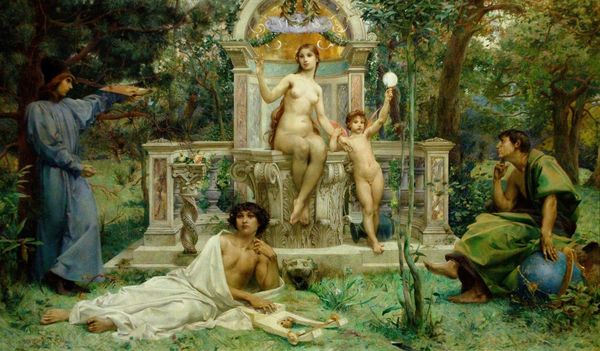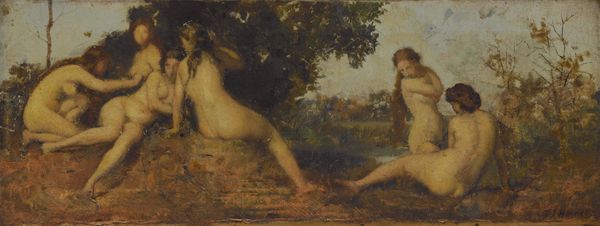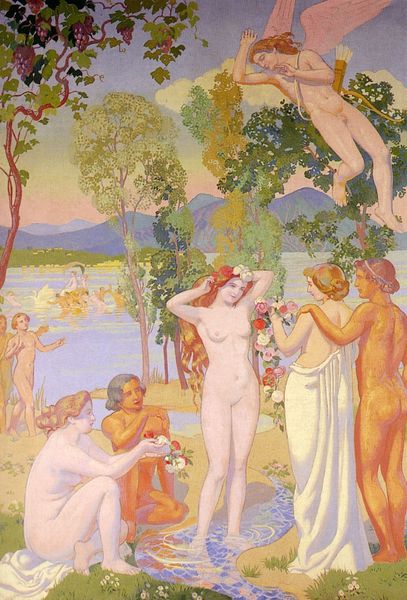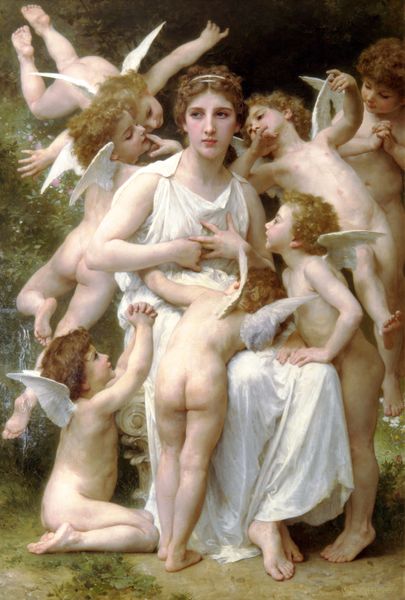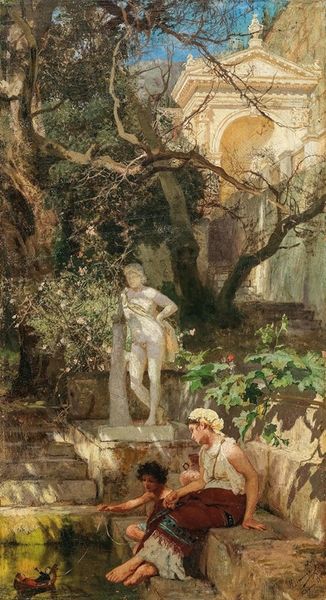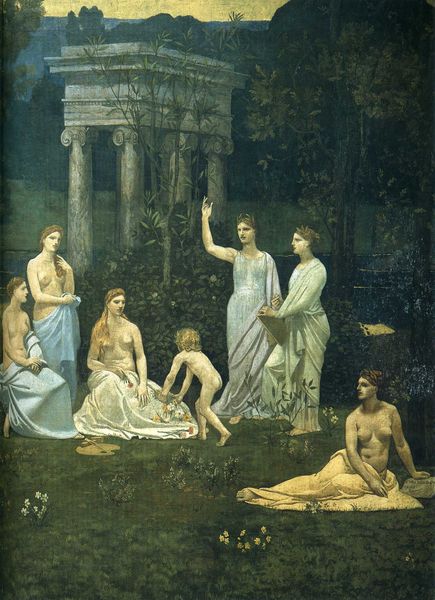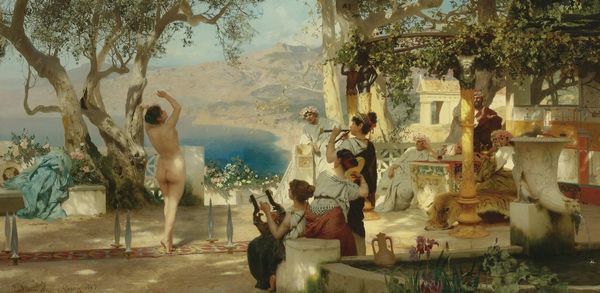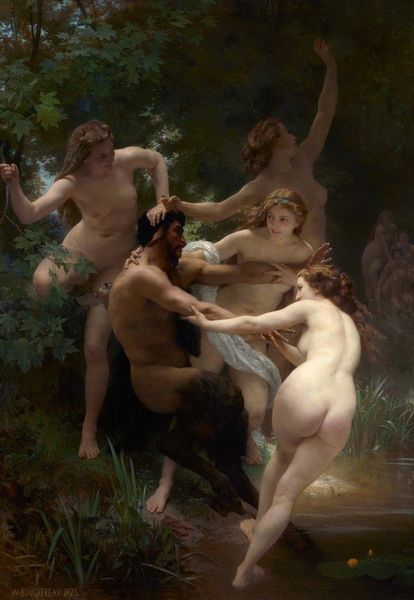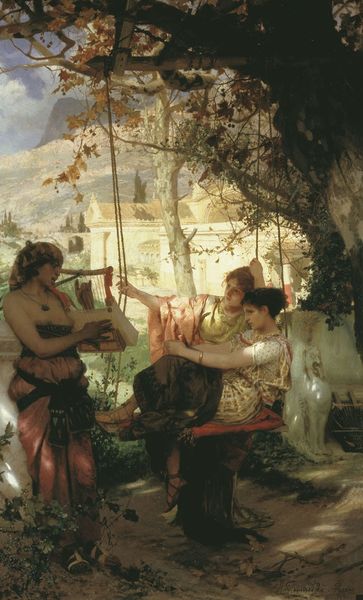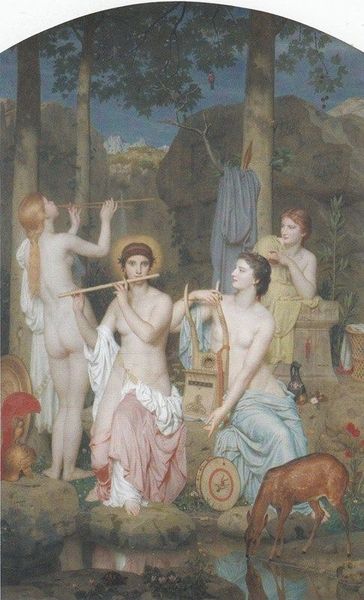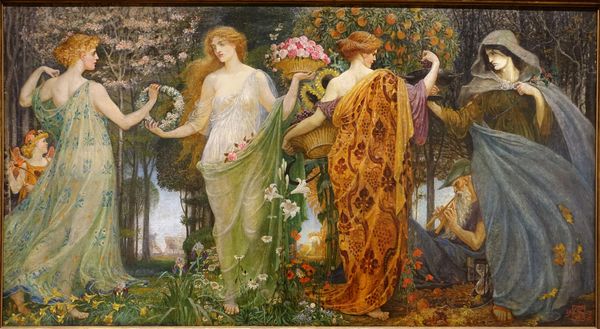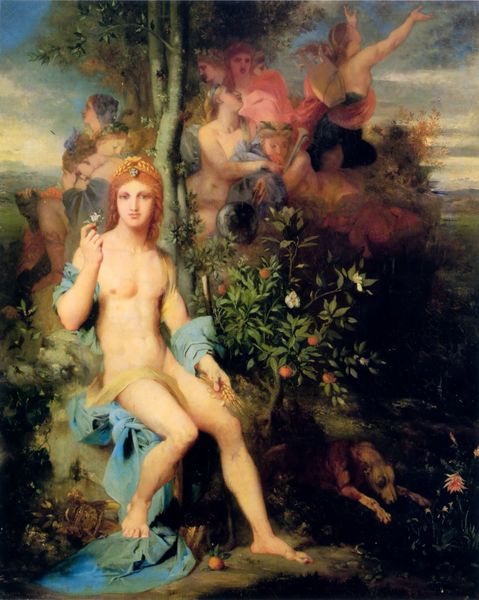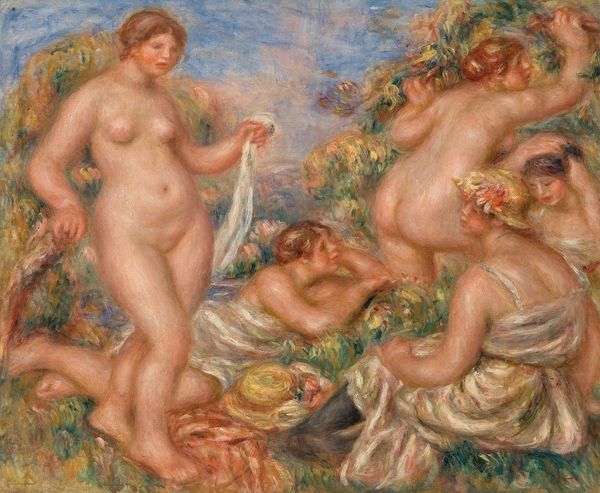
Dimensions: 220 x 373.5 cm
Copyright: Public domain
Editor: This is "Truth," painted by Luc-Olivier Merson in 1901. It's an oil painting that feels both classic and romantic. What strikes me most is how the figures, especially the central one, command your attention against this idyllic, almost dreamlike, landscape. What do you see in this piece? Art Historian: Merson's "Truth" is fascinating. Beyond its aesthetic appeal, consider the era in which it was created. Early 20th-century France was grappling with massive social and political changes, deeply affected by the fallout from events like the Dreyfus Affair and the rise of anxieties concerning national identity and societal values. Editor: So, you think it reflects these tensions? Art Historian: Absolutely. Look at the central allegorical figure of Truth, she seems almost defiant. In an era marked by misinformation, propaganda, and prejudice, Truth appears almost as a rallying cry. Editor: But there is also something mythological to it? Art Historian: Definitely. Merson appropriates classical aesthetics, yes, but he imbues it with a turn-of-the-century sensibility, in my view responding to challenges surrounding secularism and reason. In his eyes, perhaps the role of art and the artist is to pursue enlightenment through this particular lens of what can be ‘seen’. This period was marked by increased debate concerning the public's consumption of images and media; how would this painting challenge viewers during the Belle Epoque? Editor: It’s like Merson is arguing for a renewed commitment to these values but against this social background that’s a new interpretation of Truth. It also has such a painterly style for this subject matter! Art Historian: Exactly! And reflecting on today's media landscape and contemporary events, these are important topics. How can these past works offer insights into our modern perspectives, even if the styles, media, or format is different? Editor: That’s a very valid point. Thank you so much. I never would have seen all this context without you shedding light on these connections. Art Historian: It’s all about questioning, really! Keep engaging and challenging traditional readings of art through the lens of history and contemporary issues, and that will change your view of these figures over time.
Comments
No comments
Be the first to comment and join the conversation on the ultimate creative platform.
